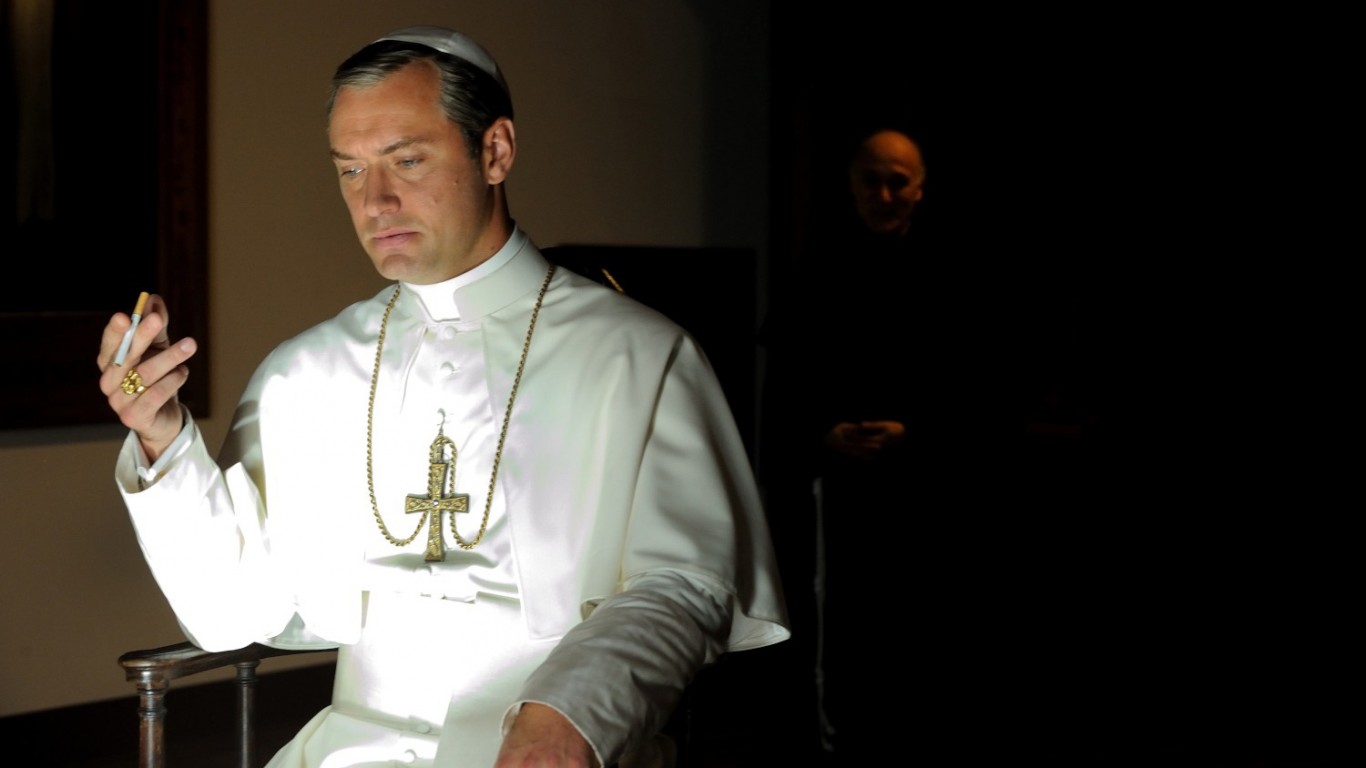By Matthew Schmitz
March 2017 Issue of First Things

Jude Law in 'The Young Pope'
The Young Pope, HBO’s series about an arch-reactionary successor to Pope Francis, is often boring and occasionally blasphemous, but its images are splendid: Jude Law, dressed in papal white, reclining with a cigarette, as menacing as Joseph Cotten in Shadow of a Doubt. Jude Law, standing on the sedia gestatoria, arms outstretched like Pius XII. Jude Law, celebrating the Tridentine Rite as if Paul VI had never reigned.
Each of these images affords the thrill of transgression. Just as AMC’s Mad Men offered its viewers the frisson of watching natty and unpleasant people smoke and drink in the office (a relief from casual Fridays, anti-smoking campaigns, and corporate sponsorship of every enlightened cause), The Young Pope depicts a Church that no longer seeks the favor of the world—and is all the more fabulous for it.
Upon his election, the young pope takes the name Pius XIII to signal a return to the past. When he addresses his cardinals, he lays out his anti-modern program: “Tolerance doesn’t live here anymore. It’s been evicted. It vacated the house for the new tenant, who has diametrically opposite tastes in decorating.” Diametrically opposite, and much improved. “The liturgy will no longer be a social engagement,” he declares. I confess that when I heard him say, “The Vatican must immediately buy back the papal tiara,” I let out a whoop.
Paolo Sorrentino, who wrote and directed the series, does not seem to be a traditional Catholic. As with most recent treatments of faith, a little more religious literacy would have gone a long way. Nonetheless, The Young Pope reveals the exhaustion of attempts to make the Church attractive by conforming it to the world. Reveling in supposedly old-fashioned garments like the papal red shoes and wide-brimmed saturno, it shows how attractive an unapologetically traditional Catholicism can be.
Sorrentino is not the first artist to admire Catholic tradition without adhering to it. Perhaps because they stand at some distance from the faith, or perhaps because they are trained in manipulating forms, artists have a way of hitting on truths about the Church that many Catholics cannot see. The signatories of the 1971 “Agatha Christie Letter” that pleaded for the preservation of the Latin Mass—people like Vladimir Ashkenazy, Agatha Christie, Graham Greene, Nancy Mitford, Iris Murdoch, and Joan Sutherland—were not generally Catholics, let alone traditional ones. But as artists, they were able to see the beauty and value of a liturgical form that too many practicing Catholics, through familiarity, had foolishly come to despise.
Click on the link below to read the rest of the article:
No comments:
Post a Comment